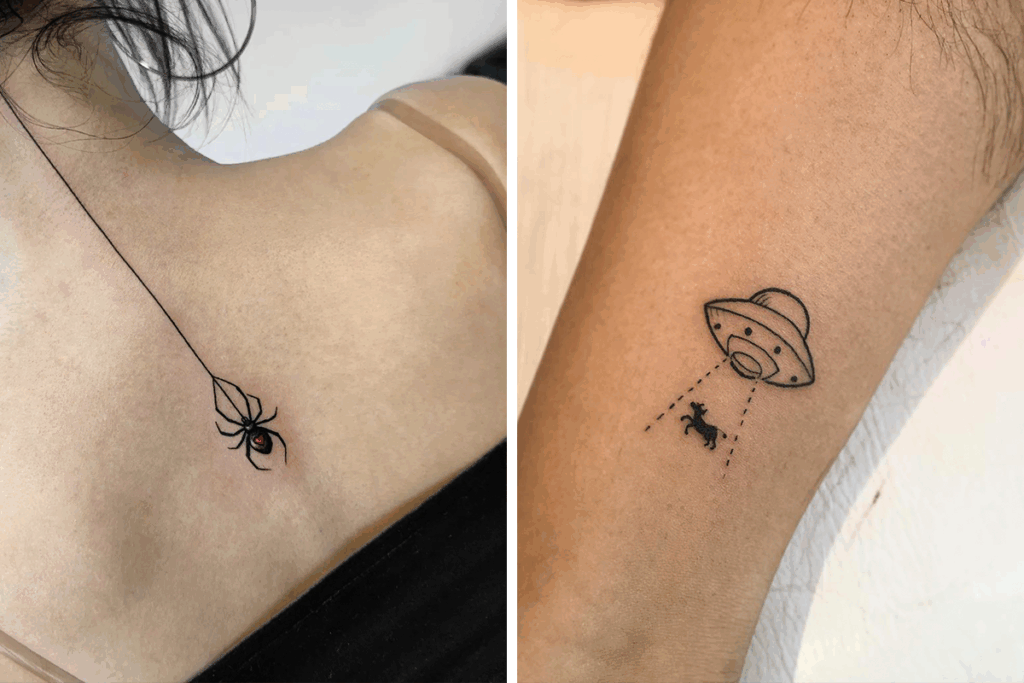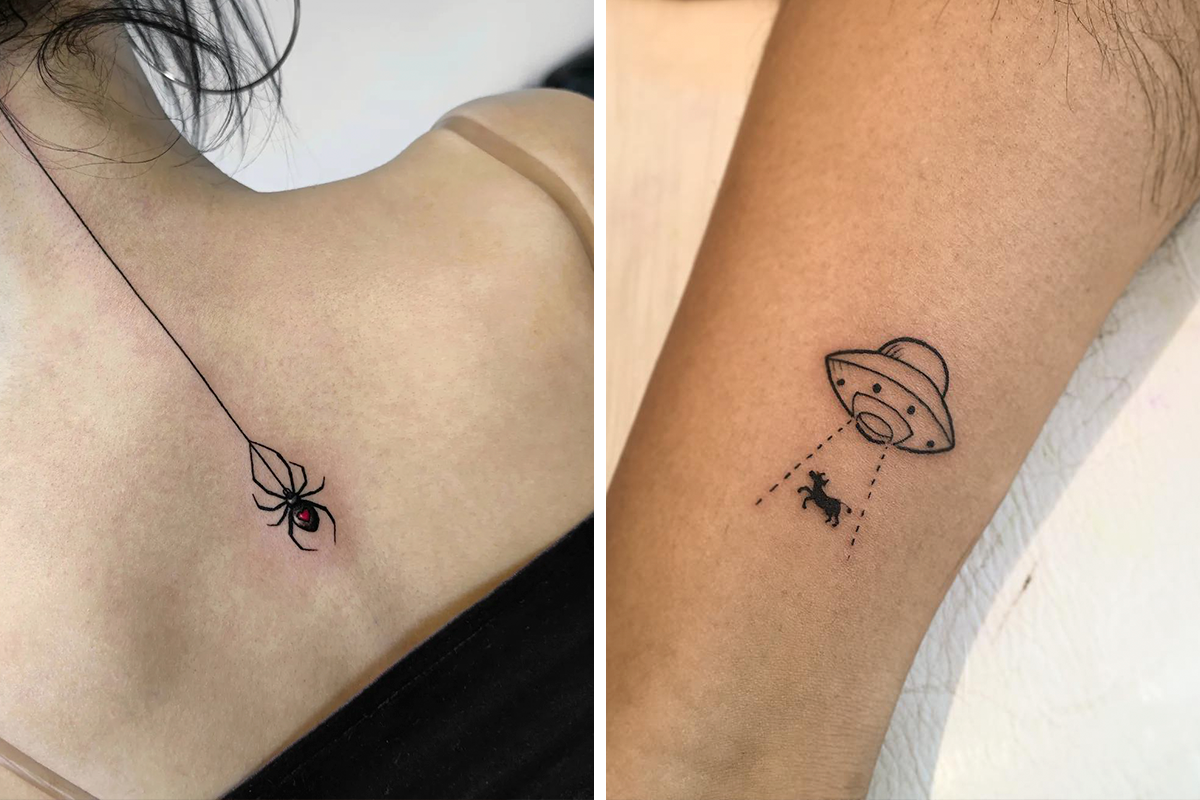
Small Tattoos on the Side: A Delicate Statement of Style and Meaning
Small tattoos on the side have surged in popularity, becoming a favored choice for individuals seeking a subtle yet impactful form of self-expression. The side of the body, from the ribcage to the hip, offers a unique canvas that can be easily concealed or revealed, adding an element of intrigue to these delicate designs. This article delves into the allure of small tattoos on the side, exploring their symbolism, placement options, popular designs, and crucial considerations before getting inked.
The Allure of Side Tattoos
The side of the body presents a distinctive advantage for tattoo placement. Its relatively flat surface allows for intricate designs to be rendered with precision. Furthermore, the ability to control visibility – concealing the tattoo under clothing or revealing it with swimwear or certain outfits – adds to the appeal. Small tattoos on the side are often chosen for their personal significance, serving as reminders of important values, memories, or aspirations.
The placement itself can hold meaning. The ribcage area, for example, is often associated with the heart and emotions, making it a popular choice for tattoos representing love, loss, or personal strength. The hip area, conversely, can symbolize sensuality and femininity. Choosing the right location for your small tattoo on the side is a critical part of the design process.
Placement Options for Small Side Tattoos
The side of the body offers a variety of placement options, each with its unique aesthetic and considerations:
- Ribcage Tattoos: Located beneath the breast, ribcage tattoos are often chosen for their intimacy and connection to the heart. This area can accommodate both horizontal and vertical designs.
- Underboob Tattoos: A more daring choice, underboob tattoos are placed directly beneath the breasts. These tattoos are typically small and symmetrical, often featuring geometric patterns or floral designs.
- Waist Tattoos: Positioned on the waistline, these tattoos can accentuate the natural curves of the body. They are easily concealed or revealed, depending on clothing choices.
- Hip Tattoos: Located on the hip, these tattoos can range from small and delicate to more elaborate designs that extend towards the thigh. They are often associated with sensuality and confidence.
- Side Thigh Tattoos: While technically on the thigh, these tattoos often extend from the side of the body, creating a seamless transition. They offer a larger canvas for more detailed designs.
When considering placement, it’s essential to factor in pain tolerance. The ribcage area, in particular, can be quite sensitive due to the proximity of bone and nerves. Consulting with a tattoo artist is crucial to determine the best placement based on your individual anatomy and pain threshold.
Popular Designs for Small Tattoos on the Side
The possibilities for small tattoos on the side are virtually endless. Here are some popular design ideas:
- Floral Designs: Flowers are a timeless choice, each carrying its own unique symbolism. Roses represent love, lilies symbolize purity, and sunflowers embody happiness.
- Minimalist Symbols: Simple shapes like hearts, stars, and geometric patterns can convey profound meaning in a minimalist style.
- Quotes and Words: Short, meaningful quotes or single words can serve as powerful reminders or affirmations.
- Animals and Insects: Animals and insects often represent specific traits or qualities. Butterflies symbolize transformation, birds represent freedom, and wolves embody loyalty.
- Constellations: Constellations are a popular choice for those with an interest in astrology or astronomy. They can represent personal connections to the cosmos.
- Musical Notes: For music lovers, musical notes or symbols can be a meaningful way to express their passion.
When choosing a design, consider its personal significance and how it resonates with your values and beliefs. A well-chosen design will hold meaning for years to come.
The Tattooing Process and Aftercare
Before getting a small tattoo on the side, it’s essential to choose a reputable tattoo artist with experience in fine-line work and small designs. Discuss your design ideas thoroughly and ensure the artist understands your vision. A stencil will be applied to your skin to ensure accurate placement before the tattooing begins.
The tattooing process itself will vary in duration depending on the size and complexity of the design. Expect some discomfort, particularly in sensitive areas like the ribcage. However, the pain is typically manageable and brief.
Proper aftercare is crucial for ensuring the tattoo heals correctly and maintains its vibrancy. Follow your artist’s instructions carefully, which typically include:
- Keeping the tattoo clean and dry.
- Applying a thin layer of unscented lotion or tattoo balm.
- Avoiding prolonged sun exposure.
- Avoiding soaking the tattoo in water (baths, swimming) until it is fully healed.
Healing times vary, but most small tattoos on the side will heal within 2-4 weeks. It’s important to be patient and diligent with aftercare to prevent infection and ensure the best possible outcome.
Pain Considerations for Side Tattoos
Pain is a subjective experience, but some areas of the body are generally more sensitive than others. The ribcage area is often considered one of the more painful locations for tattoos due to the proximity of bone and nerves. Other areas, such as the hip and waist, may be less sensitive.
Factors that can influence pain perception include:
- Individual Pain Tolerance: Everyone experiences pain differently.
- Placement: Areas with more bone and fewer muscles tend to be more sensitive.
- Size and Complexity of the Design: Larger and more intricate tattoos will generally take longer and be more painful.
- Artist’s Technique: Experienced artists can often minimize pain through proper technique.
If you are concerned about pain, consider starting with a very small tattoo on the side in a less sensitive area. You can also discuss pain management options with your artist, such as numbing creams or sprays.
Choosing the Right Tattoo Artist
Selecting the right tattoo artist is paramount to a successful and satisfying tattoo experience. Look for an artist with:
- Experience: Choose an artist with a proven track record of creating high-quality tattoos, particularly small tattoos on the side.
- A Strong Portfolio: Review the artist’s portfolio to assess their style and skill.
- A Clean and Sterile Environment: Ensure the studio adheres to strict hygiene standards.
- Good Communication Skills: The artist should be able to understand your vision and provide helpful guidance.
- Positive Reviews: Read online reviews from previous clients to gauge their satisfaction.
Don’t hesitate to ask questions and express any concerns you may have. A reputable artist will be happy to address your queries and ensure you feel comfortable and confident throughout the process.
The Cost of Small Side Tattoos
The cost of a small tattoo on the side can vary depending on several factors, including:
- Artist’s Hourly Rate: Most artists charge by the hour, with rates varying based on experience and location.
- Size and Complexity of the Design: Larger and more intricate tattoos will generally cost more.
- Color vs. Black and Gray: Color tattoos typically require more time and ink, resulting in a higher cost.
- Studio Location: Tattoo prices can vary depending on the location of the studio.
It’s essential to get a price quote from the artist before committing to the tattoo. Be wary of artists who offer significantly lower prices than the average, as this may indicate a lack of experience or poor hygiene standards. Remember, a tattoo is a permanent investment, so it’s worth paying a bit more for quality and safety.
Long-Term Considerations for Side Tattoos
Before getting a small tattoo on the side, consider the long-term implications. Tattoos are permanent, so it’s essential to choose a design that you will still love years from now. Also, be aware that tattoos can fade or change over time due to sun exposure, weight fluctuations, and aging.
To maintain the vibrancy of your tattoo, protect it from the sun by applying sunscreen regularly. Maintaining a stable weight can also help prevent the tattoo from distorting. Regular moisturizing can help keep the skin hydrated and prevent the tattoo from drying out.
If you ever decide you no longer want your tattoo, laser tattoo removal is an option. However, it’s a costly and time-consuming process that may not completely erase the tattoo. Therefore, it’s crucial to carefully consider your decision before getting inked.
Conclusion: Embracing the Subtle Elegance of Small Side Tattoos
Small tattoos on the side offer a unique and versatile way to express yourself. Their subtle elegance and ability to be easily concealed or revealed make them a popular choice for individuals seeking a meaningful and personal form of body art. By carefully considering placement, design, artist selection, and aftercare, you can ensure a positive and lasting tattoo experience. Whether you choose a delicate floral design, a minimalist symbol, or a meaningful quote, a small tattoo on the side can be a beautiful and enduring reminder of your individuality and style.
[See also: Tattoo Aftercare Tips]
[See also: Pain Scale for Tattoo Placement]
[See also: Choosing a Tattoo Design]

